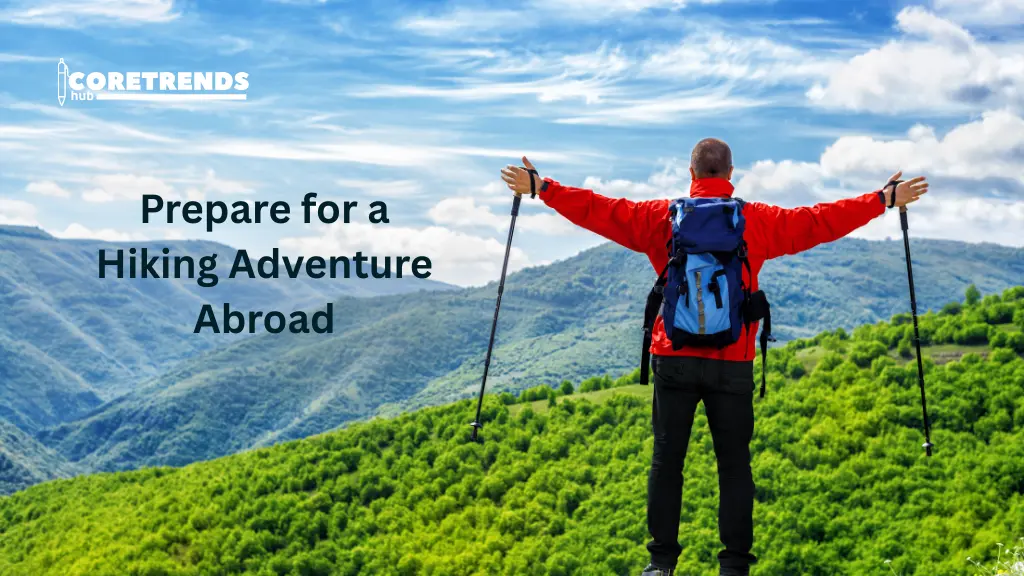Proper preparation is very important before going on a hiking trip abroad. It helps you stay safe and avoid problems during the hike. Knowing the route, packing the right gear, and understanding the local weather make the adventure smoother. Physical preparation also reduces the risk of injuries and helps you enjoy the hike without getting too tired.
Hiking abroad has many benefits. It allows you to explore new places and enjoy different landscapes. You can experience local culture and meet new people along the way. It also improves your fitness and mental health by challenging your body and calming your mind. Being in nature helps you relax and feel refreshed.
Table of Contents
Research Your Destination
Researching your destination is one of the most important steps before a hiking trip abroad. Start by understanding the terrain and climate of the area. Knowing if the trails are rocky, steep, or forested helps you pack the right gear and choose suitable footwear. Checking the weather in advance also ensures you are prepared for rain, heat, or cold, keeping you safe and comfortable during your hike.
Next, learn about local rules and hiking regulations. Some countries require permits for certain trails or limit access to specific areas. Being aware of these rules prevents fines or legal problems. It also helps you plan your route according to the regulations, making your trip smoother and stress-free.
Research popular trails and their difficulty levels. Choose routes that match your fitness and experience. Reading reviews, travel blogs, or hiking forums from people who have done the trails can give you useful tips. You can learn about potential challenges, trail conditions, and scenic spots to visit.
Physical Preparation
Physical preparation is very important before going on a hiking trip abroad. Hiking can be physically demanding, especially on uneven or steep trails. Building stamina and endurance through regular walking, jogging, or cardio exercises helps your body handle long hours of hiking. It also reduces fatigue and makes the hike more enjoyable.
Strength training is also necessary. Exercises that target your legs, core, and back help you carry a backpack comfortably and maintain balance on tricky trails. Flexibility exercises, like stretching or yoga, improve your range of motion and reduce the risk of injuries.
Practice hikes are another useful step. Doing short hikes near your area with a loaded backpack prepares your body for the real adventure. It also helps you understand how much water, food, and rest you need during longer hikes.
Planning Your Route
Planning your route is a crucial part of preparing for a hiking adventure abroad. Start by mapping out the trails you want to hike. Use maps, guidebooks, or reliable hiking apps to understand the distance, elevation, and terrain of each trail. This helps you choose routes that match your fitness and experience level.
Next, estimate daily distances and time. Knowing how far you can hike each day allows you to plan rest stops, meals, and overnight stays if needed. It also prevents overexertion and helps you enjoy the journey at a comfortable pace.
Identify emergency exits, shelters, and water sources along the trail. Being aware of safe spots and resources can be crucial if the weather changes or you face unexpected challenges.
Finally, have a backup plan. Trails may be closed, or conditions may change, so knowing alternative routes ensures you can continue your hike safely. Proper route planning makes your adventure organized, safe, and more enjoyable.
Packing Essentials
Packing essentials play a big role in making your hiking adventure abroad safe and comfortable. Start with clothing and footwear. Choose moisture-wicking clothes that keep you dry and layer them for changing weather conditions like sudden rain or cold winds. Include a waterproof jacket and extra socks for added comfort. A good pair of hiking boots or shoes with strong grip is important to avoid slips, blisters, and injuries on rough terrain.
Hiking gear and tools should be next on your list. Carry a sturdy backpack with enough space for all your items but light enough to carry for long hours. Trekking poles can give extra support on steep or rocky trails. A map, compass, or GPS device ensures you stay on track, even if you lose phone signal. A headlamp or flashlight with extra batteries is also useful for early mornings or late evenings on the trail.
Food and water supplies are crucial for maintaining your energy. Pack lightweight, high-energy snacks like nuts, energy bars, or dried fruits, along with meals that are easy to prepare. Always carry more food than you think you will need, just in case.
Travel Arrangements
Travel arrangements are an important part of preparing for a hiking trip abroad. Start by booking your flights and accommodation early to avoid last-minute stress. Choose accommodation close to the trailhead or main transport routes so you can save time and energy before your hike. Check if your chosen lodging allows you to store extra luggage that you don’t need on the trail.
Next, think about transportation to and from the trail. Some hiking destinations may require buses, trains, or even private transfers to reach the starting point. Researching this in advance helps you avoid delays and confusion. If you plan to rent a car, make sure you understand local driving rules and parking availability near the trails.
Travel insurance is another key step. It should cover not only flight or hotel cancellations but also medical emergencies and outdoor activities like hiking. Don’t forget health precautions such as vaccinations, prescriptions, or carrying copies of important documents.
Cultural and Local Considerations
Cultural Considerations
Respecting culture is very important when hiking abroad. Many trails pass through villages or sacred areas, so be mindful of how you act. Dress modestly when needed and always ask before taking photos of people or private places. Small acts of respect leave a positive impression and make your journey more meaningful.
Language is also part of culture. Learning a few simple words in the local language, like greetings or asking for directions, can help you connect with people. It shows appreciation and makes communication easier. A translation app or phrasebook can also be useful in remote areas.
Local Considerations
Local etiquette is another key factor. Customs, greetings, or dining manners can be very different from what you are used to. Being aware of these helps you avoid misunderstandings and enjoy smoother interactions.
Supporting the local economy is equally important. Buying food, renting gear, or hiring guides locally not only makes your trip more authentic but also helps the community. Respecting people and their way of life ensures your hiking adventure is enjoyable, responsible, and welcomed.
Conclusion
Preparing for a hiking adventure abroad takes time and effort, but it is worth it. Planning your route, packing the right gear, and staying fit make the trip safer and more enjoyable. Researching the destination and learning about local rules also helps you avoid problems along the way.
With the right preparation, hiking abroad becomes a rewarding experience. You get to explore new places, enjoy nature, and connect with different cultures. Stay safe, respect the environment, and embrace the journey with confidence. Proper preparation makes your adventure memorable and stress-free.



